
14 minute read
Supporting indigenous tourism
A TOTEM POLE IN VANCOUVER, CANADA
SOUTHEAST ASIA IS HOME TO MANY, DISTINCT HILL TRIBES
Advertisement
A DREAM CATCHER

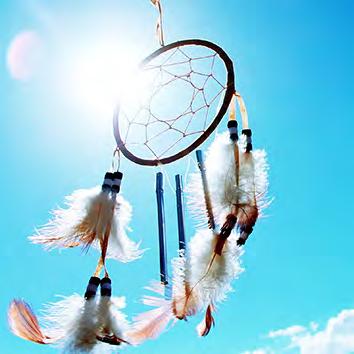
TRADITIONAL WEAVING, PERU
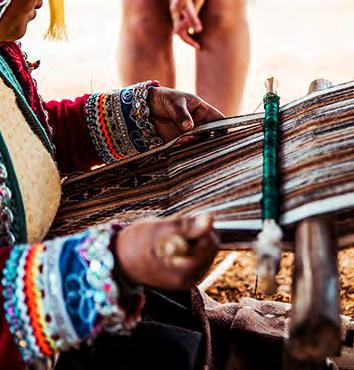
Native narratives
In some countries the prevalent culture is not the indigenous one, but visiting these communities to learn about their history and way of life makes for a more enriching holiday, says Lizzie Young
“Forget five-star accommodation, here I welcome you to my five-
thousand-star hotel,” says our Aboriginal guide, Bill, with a proud, expansive gesture and eyes turned skyward. We look up and try to take in the vastness of the clear dark sky stretching in every direction over our netted hammocks. Above us is the most spectacular star-studded skyscape we’ve ever seen.
The air is thick with the evocative evening call of the cicadas and the heady scent of eucalyptus. We are settled in for the night, deep in the Australian outback, outside Katherine in the Northern Territory. I sip bush tea cooked in a battered Billy-can as Bill’s damper (a bush bread) and his bush tucker stew cook on the campfire. All day he has been sharing the DreamTime stories of his ancestral lands, walking us through the dusty, dry outback, pointing out nutricious delicacies and medicinal musthaves; ancient art sites and natural geographic features full of legend and deep meaning.
It’s an adventure of the most authentic and educational kind. He shows us carefully and quietly that there is so much more to the outback than the ‘empty’ landscapes our western eyes see without his expert tuition. And we also learn that the opportunity to share culture and sacred stories is an empowering experience for his people too.
History lesson
The stories of indigenous people all over the world are increasingly making their way into tourism, whether in tours and museums, or events and art, but it is important to embark on any quest for an indigenous experience with some sensitivity and understanding.
Tribal dress, ceremonial rituals, dance, music and sacred places have an intrigue and magnetic appeal to the outsider but should represent live cultural values, not just tourist show pieces, and it is important to check the credentials of an interaction before you book.
In many parts of the world the back stories of these communities are neither poetic or pretty but rather a harrowing catalogue of wrongs done to indigenous groups in the name of progress - as outsiders arrived, settled and tried to change their traditional ways.
Explorers from afar often brought diseases which killed many
A PAMAGIRRI ABORIGINAL EXPERIENCE IN QUEENSLAND’S RAINFORESTATION NATURE PARK

TRADITIONALLY-DRESSED MAORI WOMEN
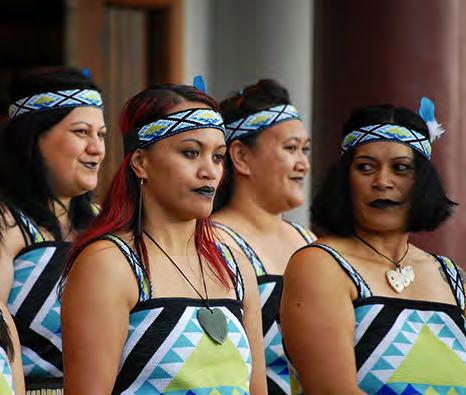
THE HMONG HILL TRIBE’S FABRICS FOR SALE, THAILAND
native people, and religious pride in their ancient traditions, and do-gooders taught others to a new sense of purpose in sharing it. deny their language and culture For travellers, these experiences in the name of God. Some of the can offer authentic insights and damage done is now recognised as cultural engagement, while for the ‘cultural genocide’. But with more communities they become a driver woke times upon us, nations are for positive change and support the slowly facing up to their sustainability of their culture. ugly past, redressing Engaging with wrongs, and working The indigenous people hard to develop employment right to be can bring benefits on both sides but opportunities and Minority Rights Group it’s important not a new respect International helps indigenous to characterise for indigenous communities. In and minority groups to combat persecution and marginalisation and achieve all indigenous experiences as many cases tourism climate change justice. niche or simplistic. can play a very minorityrights.org Wealthy Aboriginals positive role in this. (yes, there are some
In Australia, Bill explains, where lands and rights bush skills and native knowledge have been restored) now invest wasn’t always recognised, let alone in tourism infrastructure, hotels valued, but as international interest and resorts, casinos and museums. in indigenous culture grew, younger Highly educated and focused generations saw they could earn professionals from indigenous an income from their heritage, and communities are working hard to tourism helped give them a new understand traveller’s needs.
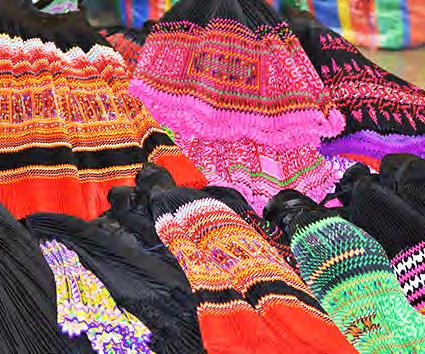
Welcome to a journey you’ve never imagined
At-Turaif, Diriyah UNESCO Heritage site
visitsaudi.com
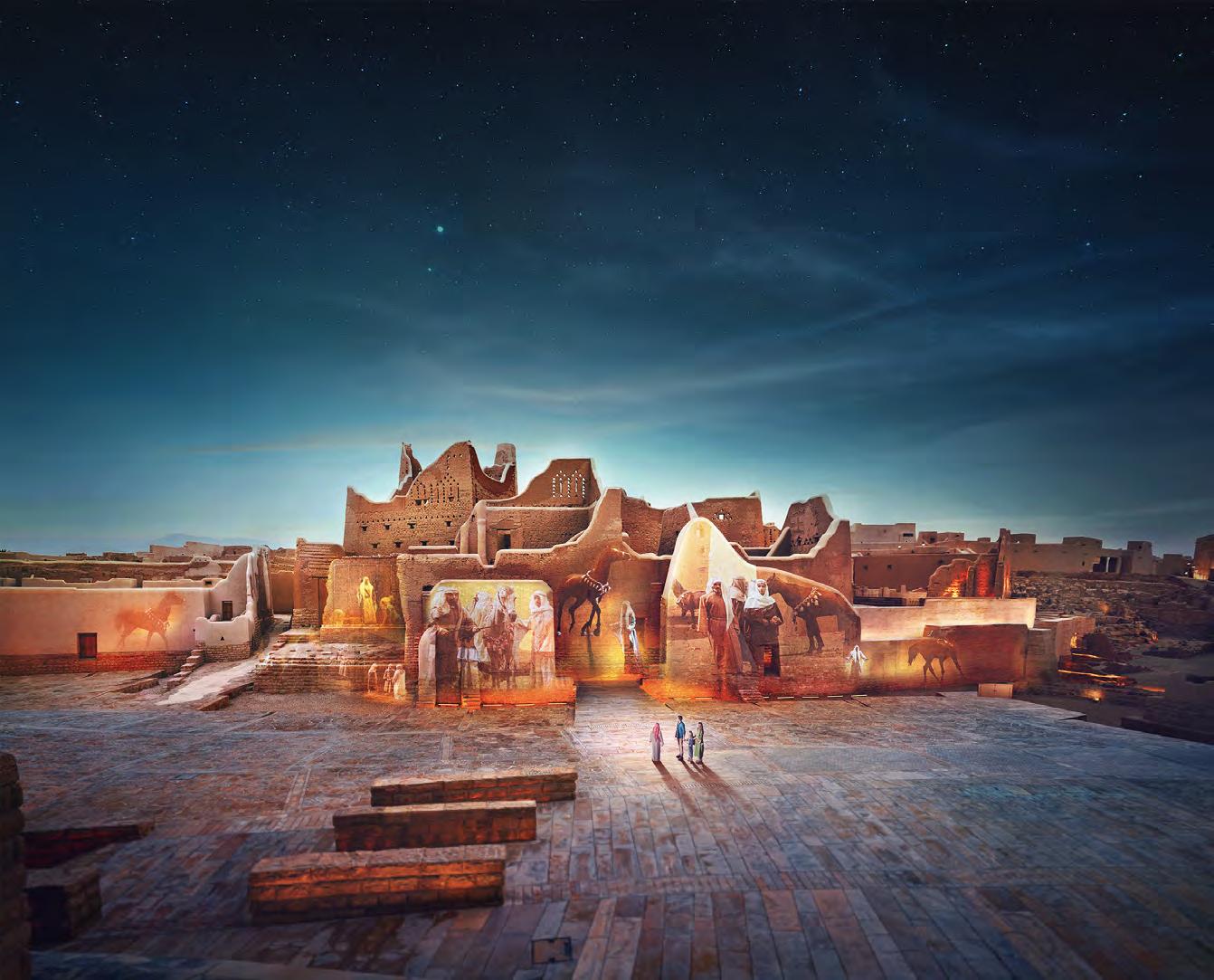
Whose story is it?
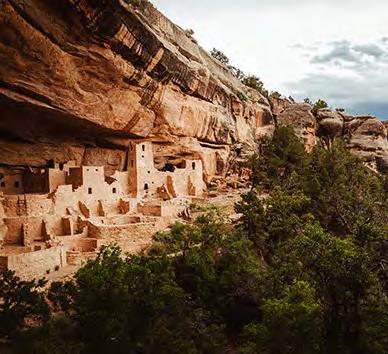
In Australia, the Discover Aboriginal Experiences programme supports almost 50 businesses which are standing by to welcome visitors from overseas for activities as diverse as guided bush tucker tours and fishing trips to quad biking adventures, wilderness retreat stays and rock art tours. There are 40,000 years of stories and traditions to explore and key to the programme is a philosophy that ensures whoever owns the story, tells the story.
In New Zealand too, Māori culture is an important part of the visitor experience, but look beyond the obvious. While the eye-catching kapa haka (group dances) and dramatic face markings remain important parts of Māori life, there is a much wider indigenous involvement in tourism. Many Māori own and manage their own tourism businesses or work as an integral part of the hospitality sector. Hiking, white water rafting, art and cultural tours can all include the opportunity to hear unique stories of the people and places first-hand and opting for these effortlessly adds breadth and depth to any holiday experience.
If you are bound for Canada, remember more than 1.4 million people identify themselves as aboriginal here – that is no small, stereotypical tribal niche. The Indigenous Tourism Association of Canada brings together aboriginalowned tourism businesses to promote the rich story-telling of the First Nations people, and these stories link communities deeply and intensely with Canada’s incredible landscapes.
Indigenous tourism is never just one thing. There are 574 federally recognised Native American tribes in the U.S. and each has its own story to tell, whether it is of past hunting skills or beautiful beadwork; traditional drumming or wood carvings. Spiritual stories are inspired by landscapes as disparate as the humid swamps of Florida and the snow-capped Rocky Mountains and offer insights into how the earliest inhabitants of these lands survived, bringing new meaning to every stunning vista.
In Europe, the only indigenous people maintaining their distinct culture are the Sámi who live primarily in Finland, Norway and Sweden. Best known for their reindeer herding, colourful outfits and winter survival skills, the Sámi population is strong and their language and culture is preserved through an autonomous Sámi parliament. They offer many activities showcasing their traditional lifestyle skills, art and folklore, but are also strongly represented in modern Scandinavian culture such as rap music, architecture, film making and cutting-edge design.
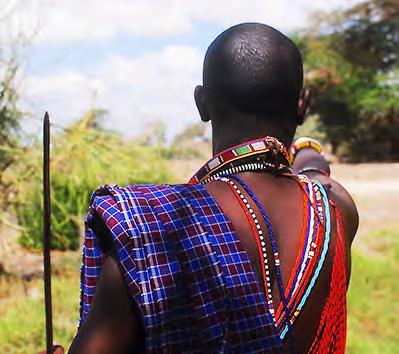
Alec Krum/Unsplash
AN ANCIENT NATIVE AMERICAN PUEBLO, MESA VERDE NATIONAL PARK
Indigenous tourism is never just one thing. There are officially 574 Native American tribes and each has its story
NATIVE AMERICAN TIPIS, GRAND CANYON NATIONAL PARK look at charitable .travel a Tak e
A MAASAI GUIDE IN KENYA
How can you access it?

As indigenous people are often closely connected with the lands they inhabit, interactions while touring can often be easily achieved simply by choosing a relevant itinerary. Look, for example, for trekking tours in Thailand, Vietnam and other countries in this region, that visit and support the
A LAKOTA NATIVE AMERICAN POW-WOW IN SOUTH DAKOTA AUSTRALIA’S ABORIGINAL PEOPLE ARE FAMOUS FOR THEIR STRIKING ART

INDIGENOUS-MADE HATS IN PERU

indigenous hilltribes living there.
If you’re passing through a region home to indigenous people, make the effort to stop. Along the Amazon River indigenous locals make their money from fishing, trading flowers, fruit, vegetables and handicrafts which you can buy from them.
In Africa, many safari camps and animal adventures support indigenous communities. It is sometimes shocking to compare the lush luxury of lodges and indulgent bush camps with the basic infrastructure of local villages, but some game reserves provide employment, support collaborative conservation and environmental awareness among the locals, and offer communities incentives to protect biodiversity. Look beyond the glamorous Out of Africa brochure shots and ask if some of this wealth goes back to the locals.
Namibia has led the way with the creation of conservancies but community-based natural resource management policies are now rolling out across Zimbabwe, Zambia, Mozambique and South Africa. In Kenya, indigenous people were once evicted from vast areas of national park to protect animals but now traditional lifestyles are encouraged to thrive alongside lands leased back to safari operators.
There is no better way to get to the heart of indigenous communities than by understanding their eating habits and culinary tours or cooking classes can make a great meal into a sociable, insightful local interaction.
Visiting indigenous communities in remote regions can be a specialist activity, needing permits, interpretation and introductions. But whether it is a trip to the tribal villages of Papua New Guinea’s jungle or the indigenous communities of the South American Andes, look for those that offer real benefits to the local communities.
Key to having a positive, ethical indigenous interaction is to ensure your visit is hosted by that community and is not a one-way activity. Ask questions, share your stories – interact and understand the culture, rather than standing behind a camera. Show respect and friendship for the people and it will be a learning, supportive experience – not a voyeuristic one – making memories stronger than any photo.
For an ethical indigenous interaction, ensure your visit is hosted by that community and is not one-way. Interact & understand. Don’t hide behind a camera
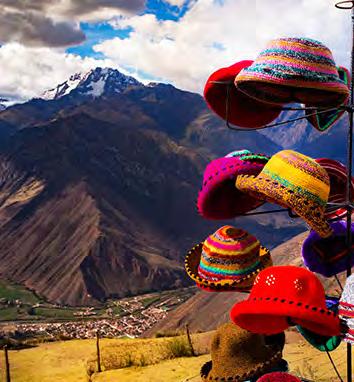
PHOENIX fashion

Couple-run Elvis & Kresse is a sustainable and ethical brand turning waste material into fashion accessories. We talk to cofounder Kresse Wesling...
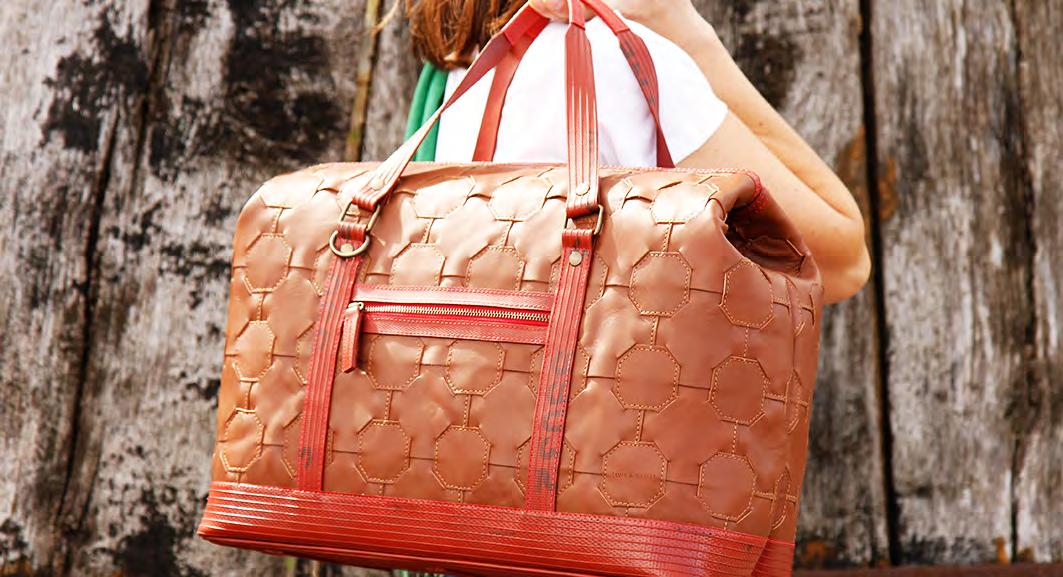
What’s the aim of Elvis & Kresse?
Linear economy and design is all about take, make, waste but we rescue, transform and donate. Starting with waste, we design a solution which changes the value of the material so we can divert it from landfill. Putting a tonne of fire hose in landfill will cost £500 but we can turn it into £60,000 of value by transforming it into beautiful handbags, belts and wallets.
We now apply this principle to 15 materials, including printing blankets, leather waste from Burberry, auction banners, parachute silk and tea sacks, making everything from bag linings to leaflets from them.
We reduce waste and re-distribute up to 50% of profits to projects and charities related to the reclaimed materials – including the Fire Fighters Charity and Barefoot College. We also give back by employing lots of apprentices at our Kent factory.
Why is sustainability important to you?
I grew up in Canada surrounded by pristine nature but later I won a scholarship to attend school in Hong Kong, where waste was rampant and recycling non-existent. After that I read the book Silent Spring and it changed me. It’s an environmental science book written in a novelistic style that punches you in the chest.
Why did you decide to be a social enterprise?
I didn’t! Until I was asked to be part of a social enterprise programme I didn’t know what it meant. But for me the financial side of business has always been a way to achieve my environmental and social goals.
I studied politics at university because I wanted to make a difference but I was disillusioned with how western democracies work - it didn’t sit well with my lack of patience and inability to compromise! When I began working I realised the power of small business because making money means you don’t have to compromise on values.
How did you and your partner Elvis meet?
On a boat, at a super heroes party in Hong Kong. When Superman walks up to you and introduces himself as Elvis your life either changes or it doesn’t! I was running a biodegradable packaging company but after the first shipment biodegraded en-route I left and moved to the UK to be with Elvis.
We’re a strong partnership because I love waste materials and want to rescue them and Elvis is able to turn them into something people will love.
Where did the business idea come from?
After I moved to the UK I became preoccupied with its awful recycling rates and went to the British Library
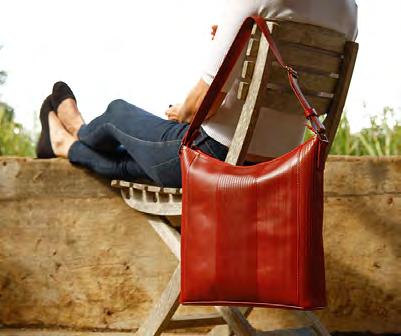
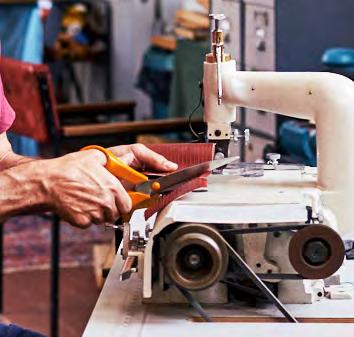
to do some research. After I found that a staggering 100 million tonnes of waste went to landfill in 2004, I started visiting landfill sites to see what that looked like. If you show an interest in landfill sites people are very helpful so I learnt a lot. I found that once waste is at landfill, there’s no turning back. Household waste is a mess – everything from dog poo and hair to cling film and bones. But industrial waste is often a uniform material that comes in a consistent amount on a consistent basis and isn’t crosscontaminated – it’s liquid gold!
I saw firehose at a landfill site but I didn’t think about it again until a chance meeting with some people from the London Fire Brigade. They told me that they send up to ten tonnes of hose to landfill each year and invited me to their Croydon station where it all goes. Four days later I told them I’d take the hose and if I made anything from it I’d give them half the money. They thought that was hilarious but a year later I made £134 and last year we donated £150,000 to the Fire Fighters Charity.
How did you market yourselves?
We were featured in the Financial Times several times – mostly because people couldn’t understand why we were giving profits away – and in 2009 we got in the first issue of Green Vogue, which put us on the map.
A chance meeting at an event bringing business leaders and social enterprises together led to us selling Apple phone cases all over Europe. It was held on a farm and there was no phone signal unless you climbed this grassy knoll, where I spotted a guy from Apple. I followed him up there and casually took my phone out which was in an Elvis & Kresse case – that piqued his interest!
How did you transform the hose?
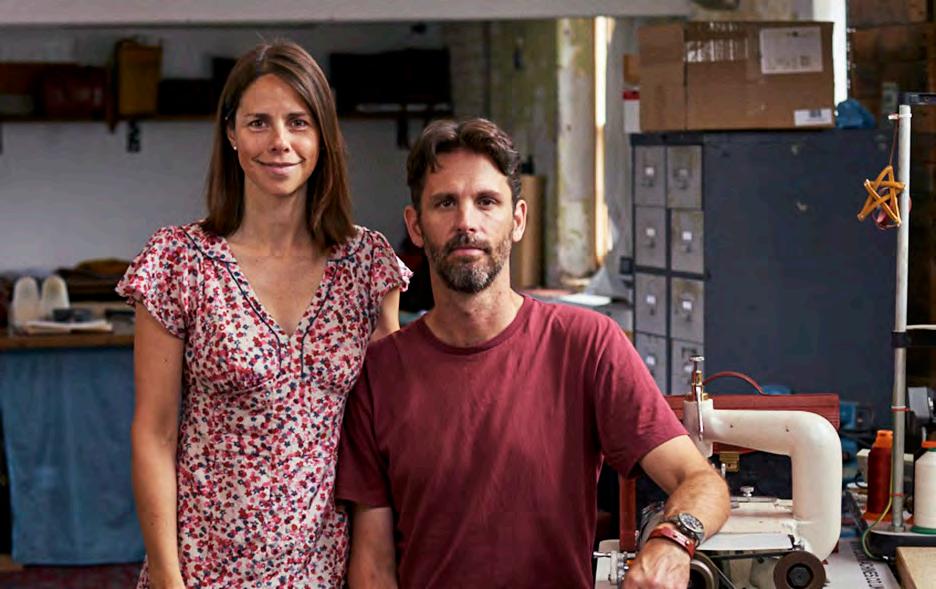
I went back to the library and researched the history of fire hose, discovering that the first were made of leather but now it’s made of a composite rubber and nylon which can’t be recycled. I learnt that some French luxury brands were using the same material in accessories but they were producing it from scratch.
We searched all over for a manufacturer, initially to turn our material into a belt, but no one wanted to help us so we bought an industrial sewing machine and Elvis started experimenting, despite having no design experience. He’s done project managing and logistics, is an ocean master yachtsman, a bike mechanic and is one exam away from being an air traffic controller but he still wouldn’t describe himself as a designer, rather a very stubborn reverse engineer! Five years later we started our own factory.
Check out o h e r t g reat causes at charitab l e . travel
What’s next?
In the UK 20% of aluminium cans aren’t recycled. We’re working with Queen Mary University to design a cheap-to-make solar-powered forge so we can turn that waste into reclaimed hardware like buckles. The design will be available to all so we can start a recycling revolution.
How can business be sustainable?
We have to consume less, redefine success and cherish resources. We should aim for a donut economy, where all economic activity is within planetary and social boundaries. You don’t expect people to grow their family every year and it should be the same with business. When you are at maximum positive impact and regenerative ability, stop growing.
Trash to treasured
Check out Elvis & Kresse’s full range of sustainable accessories from bags and purses to belts and notebooks, plus a range of stylish homeware. elvisandkresse.com












